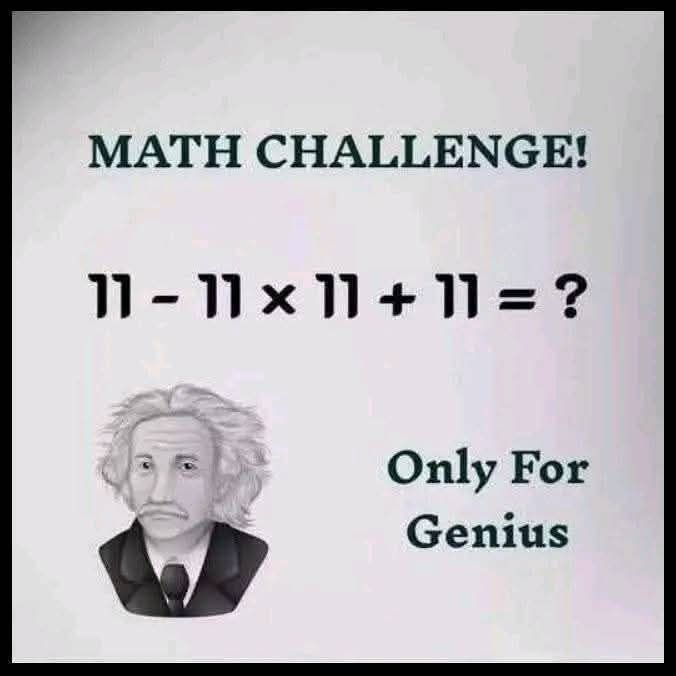There’s something oddly satisfying about solving a math puzzle. Maybe it’s the thrill of proving you still remember grade school rules. Or maybe it’s just the fun of outsmarting a tricky question that has everyone else stumped. Whatever the reason, one particular puzzle is lighting up the internet—and it’s not as easy as it looks.
Let’s break down this viral math brain teaser and see why it’s catching so many people off guard. Spoiler: there’s a twist you might not expect.

The Puzzle That Has People Scratching Their Heads
Here’s the math problem:
11 − 11 × 11 + 11 = ?
It looks like basic arithmetic, right? No parentheses, no fractions, no decimals—just whole numbers and a few operations. So why are people getting completely different answers?
Because solving it correctly depends on one crucial rule that many forget.
Video: Addition Trick |🦋Butterfly Method for addition fraction |Fraction Trick #shorts #fraction #tricks
The Hidden Trick: Order of Operations
The key to solving this riddle lies in the order of operations. If you try to calculate the problem from left to right without following proper rules, you’ll likely end up with the wrong answer. That’s where PEMDAS comes in.
PEMDAS stands for:
P – Parentheses
E – Exponents
M/D – Multiplication and Division (from left to right)
A/S – Addition and Subtraction (from left to right)
If you follow PEMDAS in order, you’ll avoid the trap that most people fall into.
Step-by-Step Breakdown of the Equation
Let’s solve this together using PEMDAS.
The original problem:
11 − 11 × 11 + 11
Step 1: Handle the multiplication first
According to PEMDAS, multiplication comes before subtraction or addition.
11 × 11 = 121
Now replace the multiplication part in the equation:
11 − 121 + 11
Step 2: Solve from left to right
Now that multiplication is done, move through the rest of the equation from left to right.
First:
11 − 121 = -110
Next:
-110 + 11 = -99
The Final Answer: -99
Yes, even though the equation looks simple, the correct answer is -99. It’s all about applying the rules in the right order.
Why So Many People Get It Wrong
The problem tricks people because it looks familiar. Seeing the same number repeated—three 11s—makes our brains want to treat it like a pattern. A lot of folks try solving it left to right without thinking about the order of operations.
They might do:
11 − 11 = 0
0 × 11 = 0
0 + 11 = 11
Which is incorrect. Or some might even forget the multiplication entirely and end up with answers like 0 or 121. The repetition of the number 11 makes the puzzle feel easier than it actually is, which is why it’s so effective at fooling people.
What This Puzzle Teaches Us About Math

This isn’t just a fun challenge—it’s a reminder of how foundational math rules work. You don’t need to be a mathematician to get it right, but you do need to remember the proper steps. It’s a classic example of how basic knowledge, when applied correctly, can save you from common mistakes.
Takeaways: Think Before You Solve
Next time you see a “simple” math problem, don’t rush it. Take a breath. Look at the operations. Follow PEMDAS like a map. And most importantly, don’t let repeated numbers lull you into a false sense of security.
This viral puzzle may seem easy, but it’s a clever way to test how well we remember the rules we learned years ago. If you got it wrong, don’t worry—you’re not alone. If you nailed it, give yourself a high five (or share the puzzle with a friend and see if they fall for it).
Because in the end, math riddles are more than just numbers. They’re a fun little test of logic, focus, and that “aha!” moment we all love.


